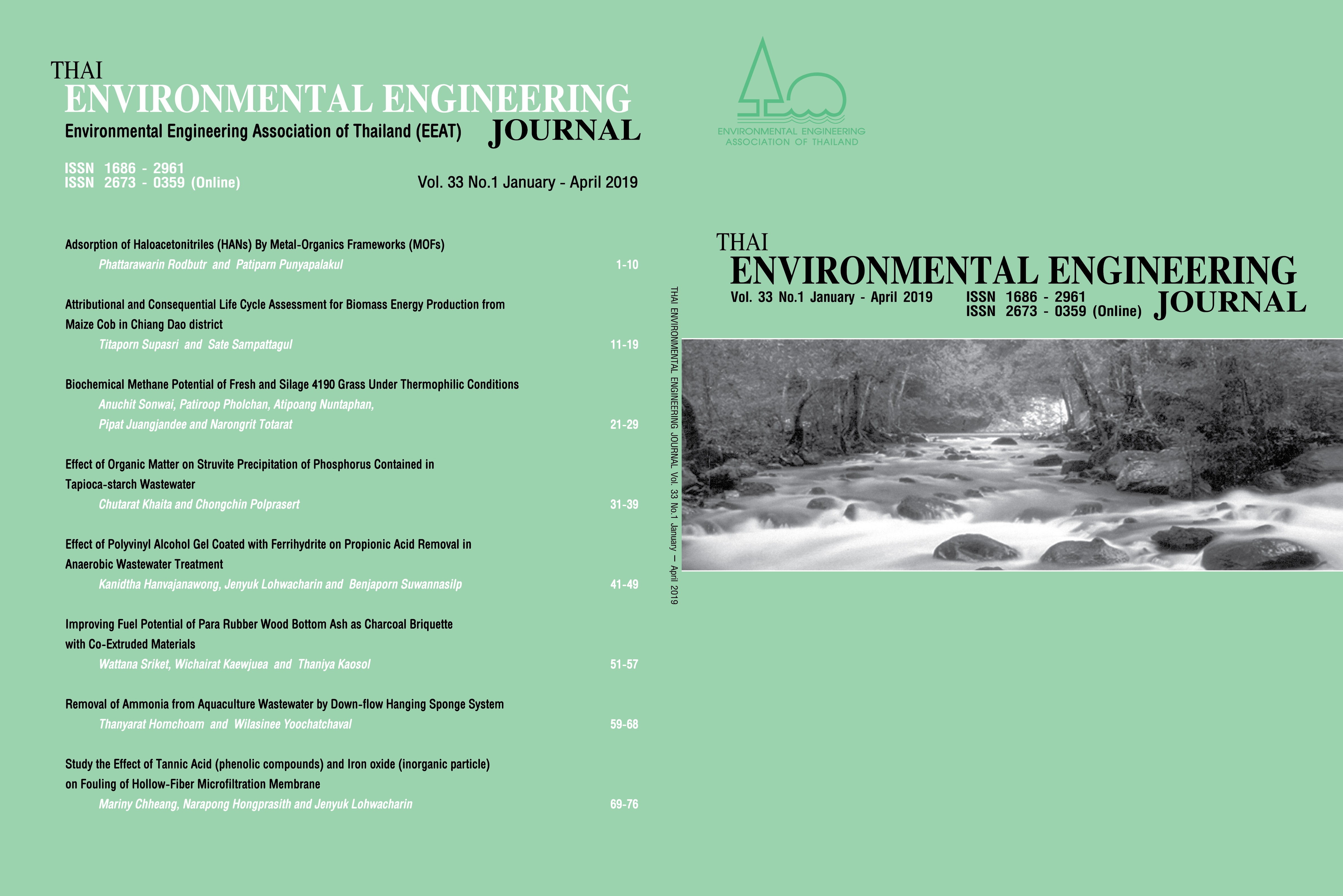Improving Fuel Potential of Para Rubber Wood Bottom Ash as Charcoal Briquette with Co-Extruded Materials
Main Article Content
Abstract
The objective of this research is (1) to study the properties of charcoal briquette of para rubber wood bottom ash (PRBA) from the biomass power plant and (2) to improve the quality of charcoal briquette by adding the co-extruded materials i.e. coconut shell charcoal powder (CSCP), Palmyra shell charcoal powder (PSCP) and mangrove charcoal powder (MCP). This research consists of three parts. The first part studies the properties of para rubber wood bottom ash and the co-extruded materials. The second part produces the charcoal briquette from para rubber wood bottom ash mixed with the co-extruded materials of various ratios. The ratios of the para rubber wood bottom ash to the co-extruded materials are 10:0, 9:1, 8:2, 7:3, 6:4, 5:5, 4:6, 3:7, 2:8 and 0:10 kg. The mixture of charcoal briquette is 10 kg of extruded materials, 1 kg of tapioca starch and 1 L of water. For compression purpose, the tapioca starch is used as a binder. The third part analyzes the properties of charcoal briquette of PRBA with the co-extruded materials that provides the best quality. From the results, the mixture ratios that provide the heating value results meet the Thai community product standards charcoal bar 238/2547 include the mixture ratio of PRBA-PSCP of PRBA: PSCP is 4:6, 3:7, 2:8 and 0:10 kg, the mixture ratio of the PRBA: MCP is 2:8 and 0:10 kg, and the mixture ratio of PRBA: CSCP of 4:6, 3:7, 2:8 and 0:10 kg. According to the standard, the heating value of charcoal briquette should be equal to or higher than 5,000 cal/g. Therefore, it can be concluded that the optimum ratios for charcoal briquette of PRBA with co-extruded materials are 4:6 of PRBA: PSCP, 2:8 of PRBA with MCP and 4.6 of PRBA with CSCP because it meets the standard and it provides the maximum utilization of bottom ash for para wood rubber from the biomass power plant.
Article Details
References
of the biomass power plant. http://www.dede.go.th/ewt_news.php?nid=41810.
[2] Raksanawes, P. and Panyosarunya, S. 2017. Charcoal briquette from bottom ash of para rubber wood from biomass power plant. Senior project, Department of Civil Engineering, Faculty of Engineering, Prince of Songkla University.
[3] Department of Industrial Works, Ministry of Energy (2012). Guidelines and guidelines waste properties for processing into fuel rods and interlocking blocks. 1-83.
[4] Thai industrial standards institute (TISI), Ministry of industry. 2004. Thai community product standards charcoal bar TCPS number 238/2547.
[5] Kitipattaworn, A., Reubroycharoen, P. and Uttamaprakorm, W. (2013). Briquette Fuel from Co-Production of Ethanol Industrial Wet Cake and Biomass. Energy Research Journal. 3:1-14.


